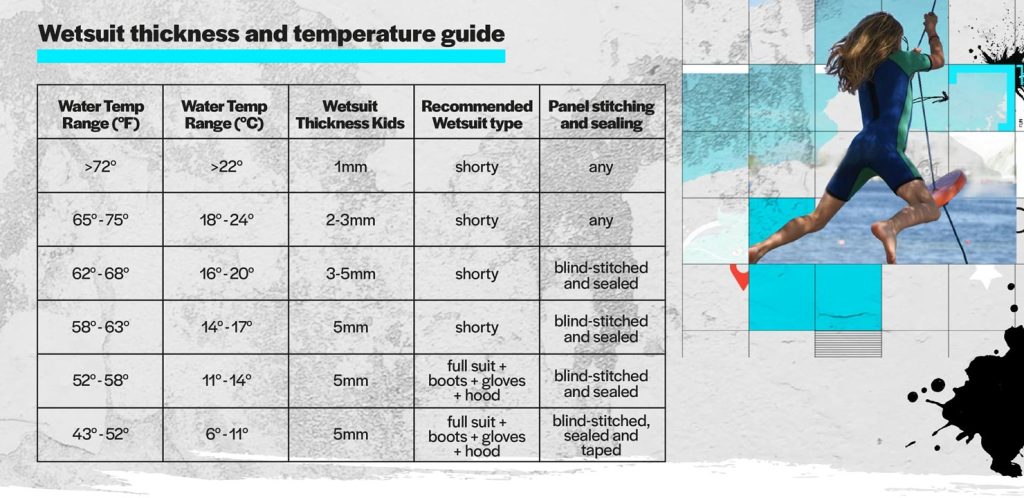Nothing beats a refreshing dive into a crystal clear lake!
But remember, all the conventional ways in which our amazing bodies regulate their body temperature are extremely inhibited in water. They’re almost nullified. That jeopardises how alert and strong you can stay in a cool river or lake.
You prevent this by protecting your core temperature. Your core runs from shoulders to hips – you can exclude limbs, neck and head*.
To stay safe your average internal core temperature must hover around 37.5 °C or 98.5 °F. Throughout your whole life (with some few exceptions) this status is maintained with incredible precision by mainly two organs: your hypothalamus and your skin**. The former, situated just below the brain, can discern even the slightest variation in temperature inside and outside your body!
Your skin is the toolbox for the hypothalamus. Too warm, and it produces sweat to cool down. Too cold, it squeezes superficial capillaries and/or initiates shivering (rapid muscle contractions that produce heat).
Without those tools in open waters, your body needs appropriate clothing that protects your core when swimming. Bear in mind that leisure swimming is safely done between 25-30° C/78-86°F***. That’s rarely on offer outdoors! The average surface temperature is 25-27°C in the Mediterranean and as low as 55°F around Florida and a very refreshing 11°F in California … . A thick layer of protection around your core is exactly what you need to be insulated from external temperature changes****. (Counter-intuitively, good thermal apparel protects us equally from over-heating as well as from over-cooling.). Speaking of “thick layers”, a little more body fat is also of use: research on adult men tells us that if your body fat percentage is higher, your core temperature will be kept at the right levels for longer*****.
For adults and kids in all shapes, neoprene wetsuits are used from Australia to Canada to create that temperature buffer. Some swimmers and water sports athletes are concerned about freedom of movement. A swimming coach friend of mine, specialised in performance training for kids, has simple advice:
“Just cut sleeves and legs off the suit” he literally says. “All you need is your core to be at the right temperature. Legs and arms work so hard that they will keep their own temperature.”
Unless you’re headed for arctic waters or you intend to spend hours on end in the cool waters, shorties offer the best mix of protection and flexibility.
That leaves buoyancy. The difference in buoyancy between a shortie and a long wetsuit is minimal – the total fabric surface areas are not that different. Do I want to restrict my movements in order to stay afloat marginally easier?
Plus, if we drift a little away from science and think about practicality, shorties make all other activity outside the water a lot easier. Running on the beach, transitions in triathlon, or sunbathing under clear skies are all better in short wetsuits than full-length!


Team Magnus only makes shorty wetsuits as this offers the best comfort for kids to get in and out of. Our wetsuits are made with only 8 neoprene panels to minimise chafing and water seepage. Thanks to the extremely elastic neoprene material we use, Team Magnus wetsuits are still highly flexible for active kids.
References
* Tucker, L. (2015) An introductory guide to anatomy and physiology 5th edn. London: EMS Publishing
** Hackney, A. C. (2016) Exercise, Sport and Bioanalytical Chemistry – Principles and practice. 1st edn. London: Elsevier.
***WHO (2006) Guidelines for safe recreational water environment. [Online]. Available from: https://www.who.int/water_sanitation_health/bathing/srwe2full.pdf [18/04/2021]
**** Knechtle, B., Christinger, N., Kohler, G., Knechtle, P., Rosemann, T. (2009) ‘Swimming in ice cold water’. International Journal of Medical Science, 178, 507-511
*****Xiaojiang X., Castellani J. W., Santee W., Kolka M. (2007) ‘Thermal responses for men with different fat compositions during immersion in cold water at two depths: prediction versus observation.’ Journal of applied physiology, 100, 79-88.





